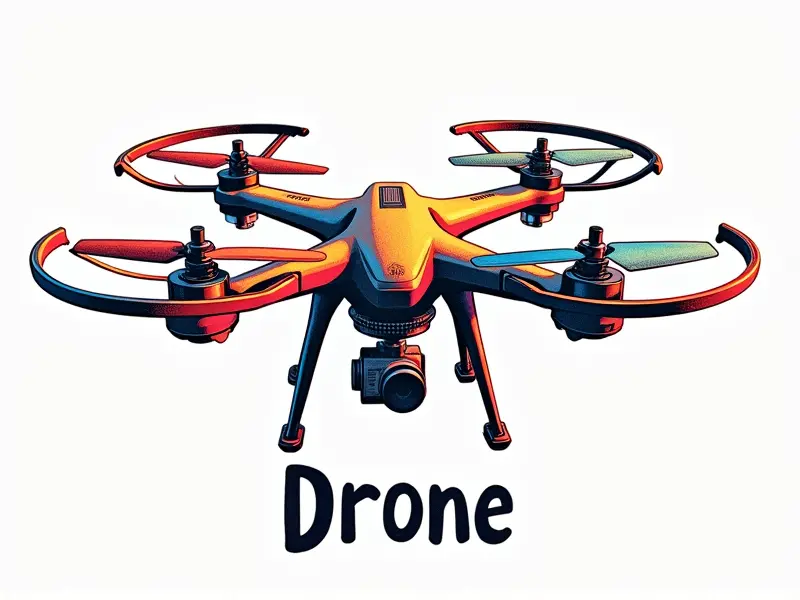How do Li-ion batteries work?

Lithium-ion (Li-Ion) batteries have revolutionized the world of remote control (RC) racing, drones, and other high-performance electronic devices. These compact powerhouses offer unmatched energy density, making them indispensable for applications where weight and efficiency are critical factors.
Why Li-Ion Batteries Rule in RC Racing
In the realm of RC racing, performance is everything. Li-ion batteries provide a significant edge due to their high capacity-to-weight ratio. They deliver consistent power output over extended periods without compromising on speed or maneuverability. This makes them ideal for both electric cars and boats.
Maximizing Flight Time with Li-Ion Batteries
The primary goal of any drone pilot is to maximize flight time while maintaining optimal performance. Li-ion batteries excel in this regard, offering superior energy density compared to other battery types such as NiMH or NiCd. By selecting the right capacity and voltage for your specific needs, you can extend your flying sessions significantly.
Understanding Voltage and Capacity in Li-Ion Cells
Voltage and capacity are two crucial factors when choosing a Li-ion battery. The nominal voltage of a single cell is typically 3.7V, but this can vary depending on the state of charge (SOC). Capacity, measured in milliampere-hours (mAh), indicates how much energy the battery can store.
Common Voltage and Capacity Configurations
- 1S: 3.7V nominal voltage, suitable for low-power devices.
- 2S: 7.4V nominal voltage, ideal for small drones and RC cars.
- 3S: 11.1V nominal voltage, commonly used in FPV racing drones.
- 4S: 14.8V nominal voltage, suitable for larger drones and high-performance RC vehicles.
Tips for Choosing the Right Li-Ion Battery
Selecting the right battery is crucial to ensure optimal performance in your device. Consider factors such as discharge rate (C rating), capacity, and weight when making your choice.
Discharge Rate (C Rating)
The C rating indicates how quickly a battery can be discharged without damaging it. A higher C rating allows for more power to be drawn from the battery at once, which is essential for high-performance applications like RC racing and FPV drones.
Capacity vs. Discharge Rate
- High Capacity: Ideal for extended flight times in low-power scenarios.
- High C Rating: Essential for high-performance applications requiring rapid power delivery.
The Impact of Li-Ion Batteries on FPV Drones
Flying a drone with first-person view (FPV) requires a reliable and efficient power source. Li-ion batteries provide the necessary energy density to support high-speed flight, agile maneuvers, and long-range communication.
Li-Ion Batteries 101 for Drone Enthusiasts
For drone enthusiasts, understanding the basics of Li-ion battery technology is essential. This includes knowing how to properly charge, discharge, and store your batteries to ensure longevity and performance.
Battery Charging Best Practices
- Use a Dedicated Charger: Ensure you use a charger designed specifically for Li-ion batteries.
- Avoid Overcharging: Charge the battery until it reaches 80-90% of its capacity, then remove it from the charger to prevent overcharging.
Unveiling the Secrets of Li-Ion Battery Tech
The technology behind Li-ion batteries is complex but fascinating. Understanding how these batteries work can help you make informed decisions when selecting and maintaining your power source.
Battery Chemistry Explained
Lithium-ion batteries use lithium cobalt oxide (LiCoO2) as the cathode material, while graphite serves as the anode. During discharge, lithium ions move from the anode to the cathode through a liquid electrolyte.
Battery Charging and Discharging Process
- Charging: Lithium ions travel from the cathode to the anode.
- Discharging: Lithium ions move back from the anode to the cathode, releasing energy in the process.
Common Myths About Li-Ion Batteries Debunked
There are several misconceptions surrounding Li-ion batteries that can lead to improper use and reduced lifespan. Let's debunk some of these myths:
Myth: Li-Ion Batteries Should Be Fully Discharged Before Recharging
Reality: This is a common misconception for older battery technologies but not applicable to Li-ion batteries. In fact, frequent deep discharges can shorten the lifespan of your Li-ion battery.
Myth: Overcharging Damages Li-Ion Batteries
Reality: Modern chargers are designed with safety features that prevent overcharging and damage to the battery. However, it's still best practice to avoid leaving batteries on charge for extended periods.
Charging Tips for Optimal Li-Ion Performance
To get the most out of your Li-ion batteries, follow these tips:
Temperature Considerations
Lithium-ion batteries perform best within a temperature range of 0°C to 45°C. Avoid exposing them to extreme cold or heat.
Battery Storage Tips
- Store at Room Temperature: Keep your batteries in a cool, dry place away from direct sunlight.
- Partial Charge: Store Li-ion batteries with a partial charge (around 50%) to prevent deep discharge.
The Role of Li-Ion Batteries in RC Planes
In the world of remote control planes, weight and power-to-weight ratio are critical factors. Li-ion batteries offer an excellent balance between these two elements, making them a top choice for RC pilots.
Efficiency and Performance
The lightweight nature of Li-ion batteries allows RC planes to achieve higher speeds and longer flight times compared to traditional battery types. This makes them ideal for both recreational flying and competitive racing.
Secrets of Li-Ion Battery Efficiency Revealed
To maximize the efficiency of your Li-ion batteries, consider these tips:
Battery Maintenance
- Cycle Regularly: Use your battery frequently to maintain its health.
- Avoid Extreme Temperatures: Protect your battery from extreme cold or heat.
Optimizing Battery Lifespan
- Monitor Voltage Levels: Keep track of voltage levels to avoid deep discharges.
- Use High-Quality Chargers: Invest in a reliable charger designed for Li-ion batteries.
Conclusion
Lithium-ion batteries are the cornerstone of modern electronic devices, from smartphones and laptops to drones and RC vehicles. By understanding their technology and proper care practices, you can ensure optimal performance and longevity for your Li-ion battery-powered gadgets.
Remember, a well-maintained Li-ion battery is not only more efficient but also safer to use in various applications.

